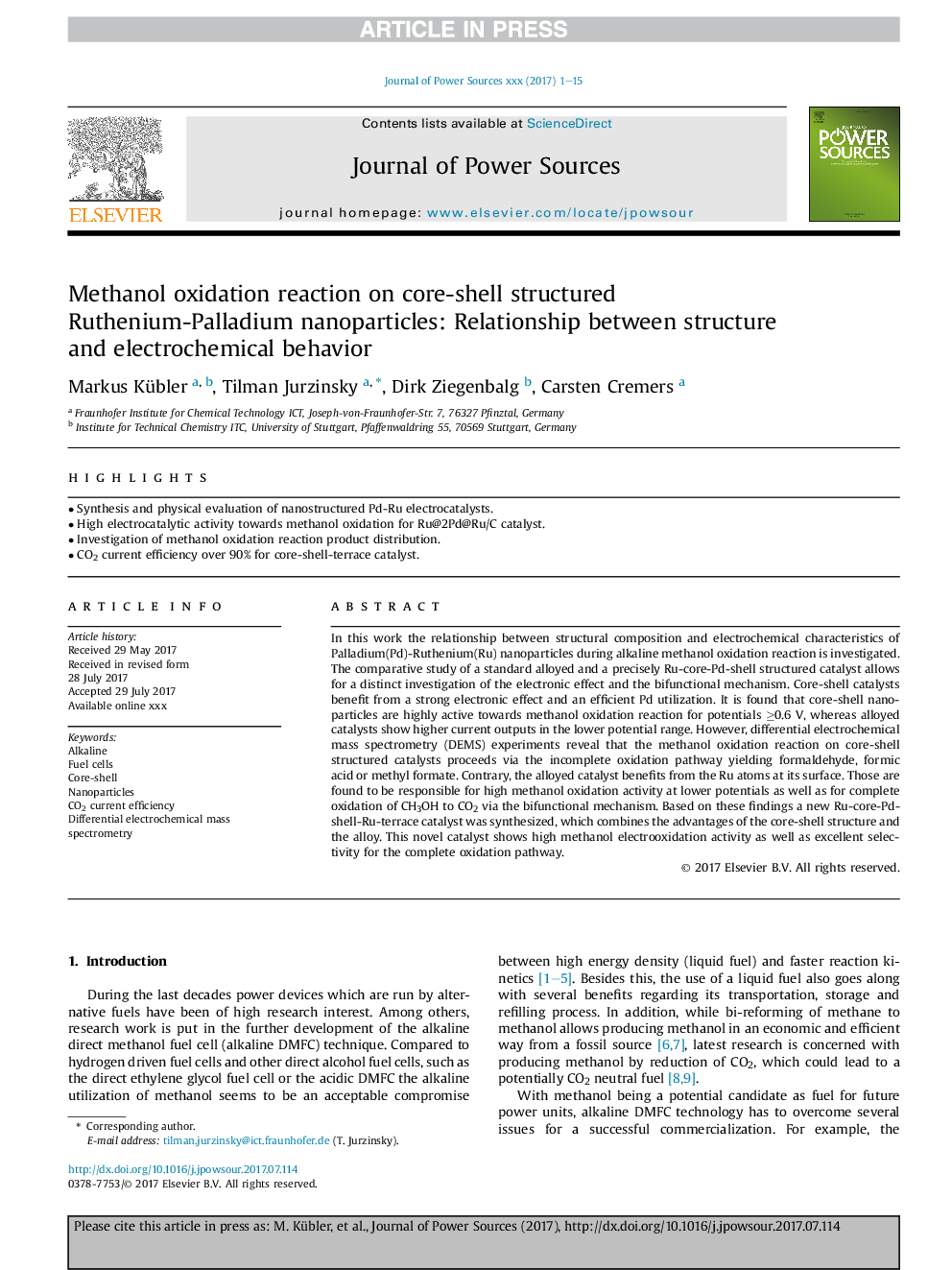| Article ID | Journal | Published Year | Pages | File Type |
|---|---|---|---|---|
| 7726122 | Journal of Power Sources | 2018 | 15 Pages |
Abstract
In this work the relationship between structural composition and electrochemical characteristics of Palladium(Pd)-Ruthenium(Ru) nanoparticles during alkaline methanol oxidation reaction is investigated. The comparative study of a standard alloyed and a precisely Ru-core-Pd-shell structured catalyst allows for a distinct investigation of the electronic effect and the bifunctional mechanism. Core-shell catalysts benefit from a strong electronic effect and an efficient Pd utilization. It is found that core-shell nanoparticles are highly active towards methanol oxidation reaction for potentials â¥0.6 V, whereas alloyed catalysts show higher current outputs in the lower potential range. However, differential electrochemical mass spectrometry (DEMS) experiments reveal that the methanol oxidation reaction on core-shell structured catalysts proceeds via the incomplete oxidation pathway yielding formaldehyde, formic acid or methyl formate. Contrary, the alloyed catalyst benefits from the Ru atoms at its surface. Those are found to be responsible for high methanol oxidation activity at lower potentials as well as for complete oxidation of CH3OH to CO2 via the bifunctional mechanism. Based on these findings a new Ru-core-Pd-shell-Ru-terrace catalyst was synthesized, which combines the advantages of the core-shell structure and the alloy. This novel catalyst shows high methanol electrooxidation activity as well as excellent selectivity for the complete oxidation pathway.
Keywords
Related Topics
Physical Sciences and Engineering
Chemistry
Electrochemistry
Authors
Markus Kübler, Tilman Jurzinsky, Dirk Ziegenbalg, Carsten Cremers,
